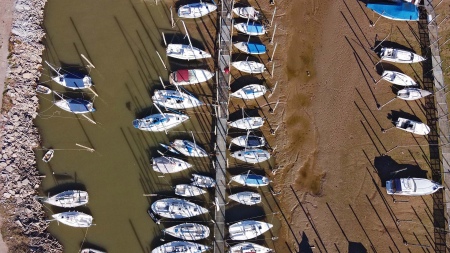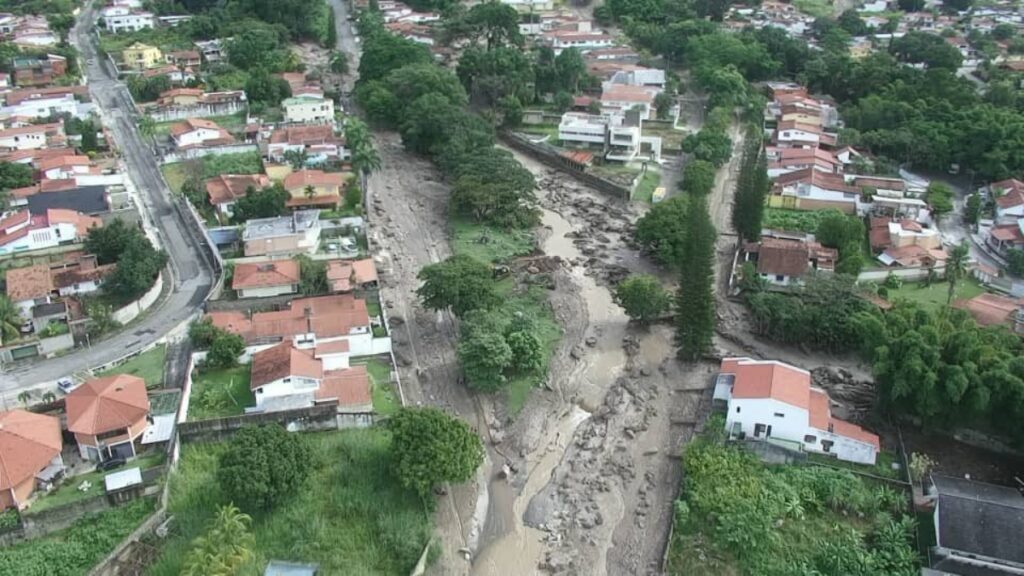In the analysis of the quarterly forecast participate not onlyprofessionals of the NMS but also from the National Water Institute (INA)of the Chair of Agricultural Climatology of the Faculty of Agronomy of the University of Buenos Aires (UBA), of the Department of Atmospheric and Ocean Sciences (DADA) from the UBA, from the National Institute of Agricultural Technology, from the Interjurisdictional Authority of the Limay, Neuquén and Negro River Basins (ICA)of the National Council for Scientific and Technical Research (CONICET)the Undersecretary of Water Resources of the Nation, and the Bermejo River Regional Commission.
“The quarterly forecast is important for different economic sectors such as agriculture that has to plan crops for the coming months, so it is key to have a projection of whether it is going to rain and the temperatures,” says the PhD in Atmospheric Sciences from the DADA, Soledad Collazowhose contribution is the forecast of extremes of maximum and minimum temperatures.
“If I forecast a large number of days with very high maximum temperatures, the energy demand is going to be high and we will have to find some way to cover it, and if there are frosts it will affect the crops,” he exemplifies. Other sectors such as water, construction, shipping, and even tourism consult the results of the quarterly climate trend.
To make his predictions, Collazo relies on statistical models and considers different climate forcings. Then, he looks at how many models are predicting the above-normal temperature categories and how many below-normal, and based on that he builds the forecast. “I apply and train the model for each weather station. The work is quite exhaustive”, he describes.

Collazo developed the extreme temperature forecast model for his doctoral thesis and after a period of testing and training, for a few years he has been presenting the results at monthly meetings. “Now I am working on a project to incorporate more advanced deep learning and artificial intelligence techniques,” she says.
With a shyness that does not manage to hide his pride, Collazo assures that so far this year the forecasts of extreme temperatures have been giving him “pretty well”. The work becomes more complex when making a forecast of average temperatures, which is an average, and there the SMN resorts to other dynamic models based on equations and that come from centers in the United States and Europe.
“We take the information from the dynamic models of global circulation of the behavior of the atmosphere and the oceans,” he explains. the meteorologist Mercedes Poggi of the Central Directorate of Climate Monitoring of the SMN. As sometimes these global models fail to reproduce local elements, statistical calibrations and those developed in the DADA are also used.
“We prepare the forecasts with all this information and we also take into account large-scale forcing events such as El Niño or La Niña, and the previous conditions because it is not the same, for example, forecasting wet conditions in a drought situation than in a normal one. ”, clarifies Poggi.

The quarterly weather trend meetings begin with an analysis of the ability of the previous forecast, that is, its accuracy, and that is when Poggi’s verification work takes center stage. “The forecast by consensus is subjective, if you want to reproduce it in another quarter it is not possible and that is why we do the verification, to test it and compare it with the objective,” says the climatologist. Based on the results, she affirms that the subjective is more skillful: “Although it has some shortcomings, it has the added value of climate experts and we also forecast for the entire country.”
Being a quarterly forecast, it cannot escape having a certain degree of uncertainty, which is why Poggi also recommends following short-term forecasts “because we may foresee drier conditions but then an extreme precipitation event occurs and in one day it rains as much as in a month. There are smaller-scale phenomena that the quarterly report does not capture”, warns Poggi.
The Deputy Manager of Hydrological Information and Warning Systems of the National Water Institute (INA), Juan Borús, is one of the oldest members of the consensus forecast meetings that had their antecedents in 1997, from the initiative of the meteorologist Julio Hugo Hordij. “The contribution of the INA is to analyze to what extent a climate trend is transformed into a favorable trend or not in terms of river flows,” specifies the engineer.

The interventions of the INA in these meetings consist of “the interpretation of the impacts produced by rains or their lack, or any other meteorological event in the floods of the Río de la Plata Estuary, for example, or if the winds can cause a downspout ”, indicates Borus.
Regarding the downspout of the Paraná River, the INA expert stated that “we have completed three years of an extraordinary situation. We have no comparison back and we are constantly trying to answer when it ends. It is expected that between mid and late summer, a gradual evolution towards normality will begin to be observed.
Borús warns that “regional climate variability is strongly enhanced. It has a much greater dynamic than 20 years ago and this means that we can be seeing important changes in a short time”. The INA specialist adds that “the years 2009 and 2019 have been emblematic in areas of the La Plata Basin in which an abrupt passage from a humid to dry or a very marked dry to humid situation was observed. This makes the possible horizon of certain climatic perspectives very short” and points to climate change as the culprit.
?️☁️ Much more than looking out to see if it rains: the kitchen of the quarterly forecast
What are the variables that meteorologists, climatologists, specialists in hydrology and agronomy take into account to arrive at the forecast?
✍️ Cecilia Farrehttps://t.co/gmuYZmbCOHpic.twitter.com/Rnkuof1Bcl
— Trust (@Confi_ar) October 18, 2022
The weather to come
Based on below-average sea surface temperatures in the equatorial Pacific in mid-September and the results of various climate models, the International Research Institute for Climate and Society (IRI) at Columbia University estimates that there is a 75 percent chance that La Niña will continue to be present during the months of December, January and February.
When this phenomenon occurs with an intensity capable of influencing, in Argentina it is associated with drier conditions. “What we had this year is a weak to moderate La Niña, this means that it has a signal that arrives, that it has influence,” he indicates. Cindy Fernández from the National Weather Service.
“When summer arrives -advances the meteorologist- what is observed in the forecasts is that it will tend to weaken so that other factors will begin to play that will contribute or inhibit the effects that La Niña has”, for which she recommends following forecasts Short-term.
For the last quarter of the year, La Niña will continue with a significant signal. According to Fernández, this phenomenon contributes to the fact that the air is drier and that temperatures can rise or fall more easily and, therefore, there is a greater thermal amplitude.

Secondly, The SMN, together with specialists from other organizations, prepared the consensus climate forecast that indicates that for the remainder of the year the probability of rainfall will be lower than normal in the Litoral region, north and east of Buenos Aires, Santa Fe, Córdoba, east of San Luis and west of Patagonia, while they will be in the range of normal to below average in the north, La Pampa, southwest of Buenos Aires, east and south of Patagonia. Normal conditions are expected in the northwest and in Cuyo.
“We must bear in mind that although the forecast predicts less rainfall due to all this influence in the region, we are entering the rainy season. October and November are one of the rainiest months in the Pampean region, so it is expected that rainfall will begin to be at least a little more recurrent, although without reaching normal conditions for this time, clarifies the meteorologist.
The atmosphere works as a complex system and for this reason the climatic trend considers the different factors that influence the region in addition to the La Niña phenomenon.
As for temperatures, the forecast for the months of October, November and December estimates that they will be above average in Buenos Aires, La Pampa, Córdoba, San Luis, southwest of Santa Fe and in the center and north of Patagonia, while from normal to higher than what is frequent in the south of the Litoral and in the Cuyo region. In the rest of the country, temperatures will be within the average for the season.
















